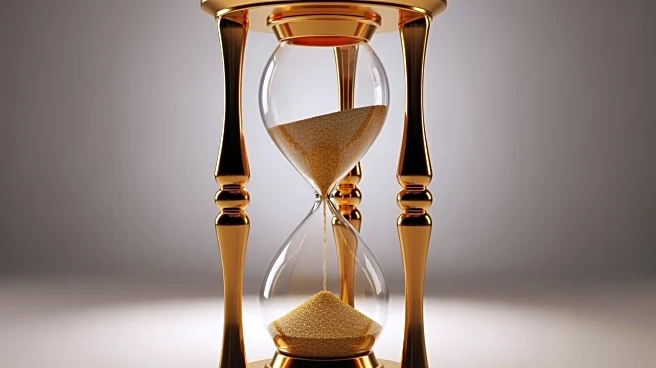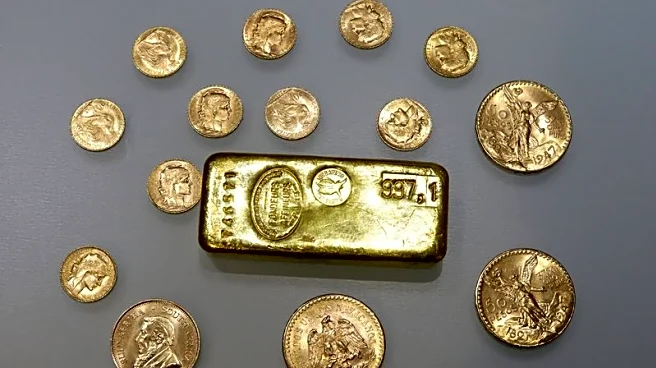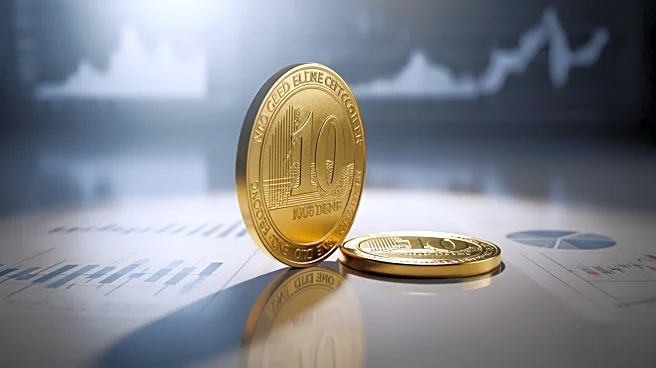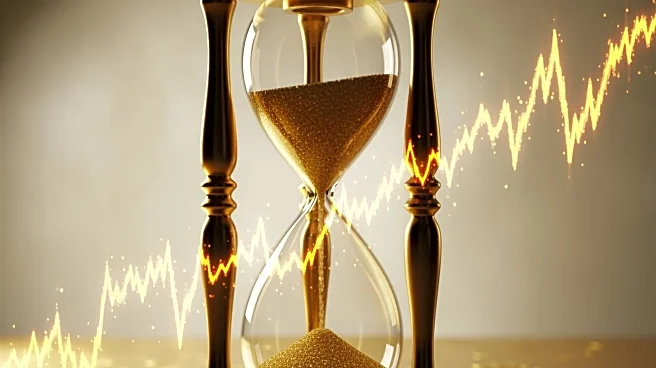What's Happening?
The gold market is showing signs of recovery following a significant single-day correction, the most severe in over eighteen years. On Monday, spot gold prices reached a record high of $4,381 per ounce,
with December Comex futures peaking at $4,398. However, by Tuesday, both markets experienced a sharp decline of over $230, marking the steepest drop since 2013. Despite this volatility, the correction is seen as technically sound, given gold's 57% year-to-date appreciation. A doji candlestick pattern formed on Wednesday suggests a potential inflection point, indicating that the bullish momentum may continue. As of the latest trading, gold futures have risen by $26.60, or 0.65%, to $4,132, reinforcing the possibility of a market pivot.
Why It's Important?
The recent developments in the gold market are significant for investors and economic stakeholders. The sharp correction and subsequent recovery signal potential volatility but also opportunities for traders. The gold market's performance is closely tied to economic indicators, such as inflation and Federal Reserve policies. The upcoming Consumer Price Index report, delayed due to a government shutdown, could further influence gold prices. Higher-than-expected inflation could impact market expectations regarding Federal Reserve rate cuts, a key driver of gold's recent rally. Investors and financial institutions are closely monitoring these developments, as they could affect investment strategies and economic forecasts.
What's Next?
The next major economic event that could impact gold prices is the release of the Consumer Price Index report. Market consensus anticipates an annual inflation rate of 3.1% for the previous month. If the report reveals higher inflation, it could alter expectations for future Federal Reserve rate cuts, potentially affecting gold's trajectory. Traders and analysts will be watching for any shifts in economic policy or market sentiment that could influence gold's performance in the coming weeks.












